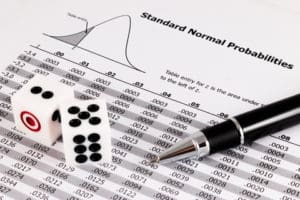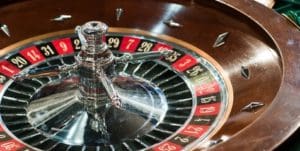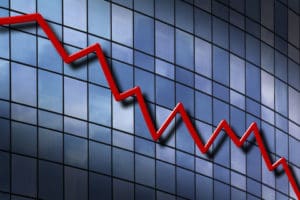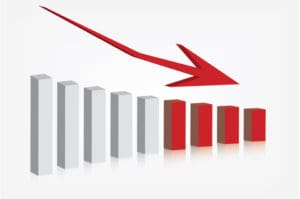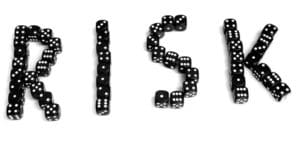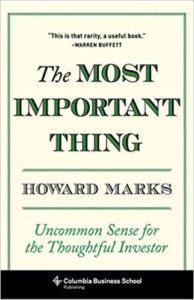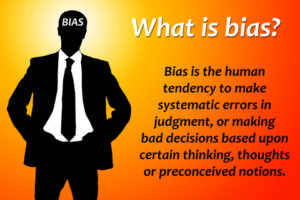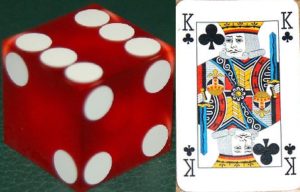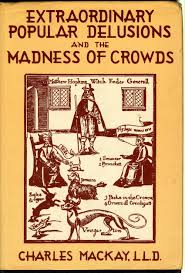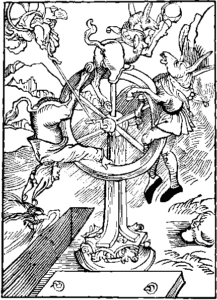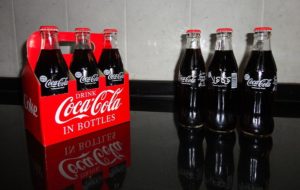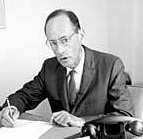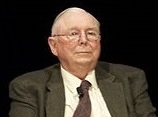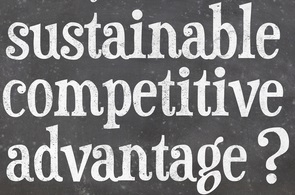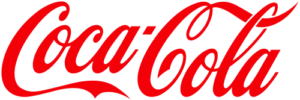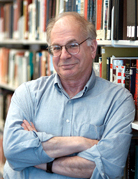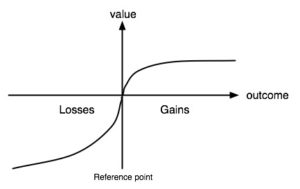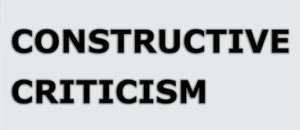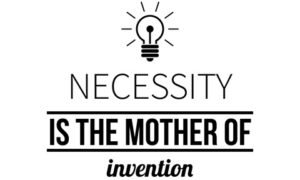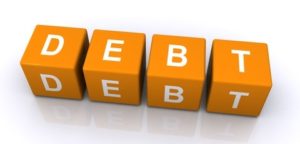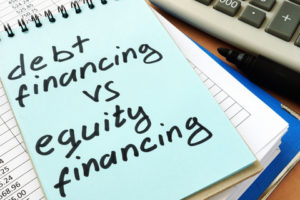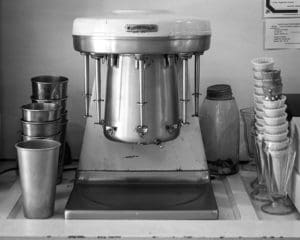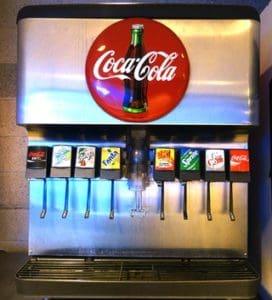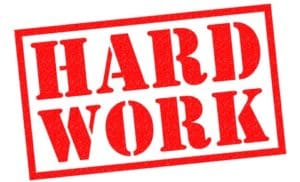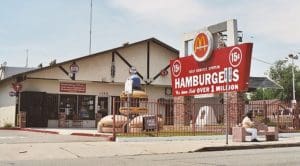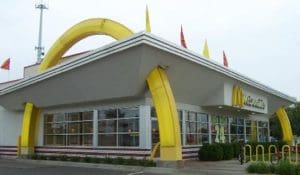July 3, 2022
Warren Buffett’s Ground Rules: Words of Wisdom from the Partnership Letters of the World’s Greatest Investor, is an excellent book by Jeremy C. Miller. Miller did the book with no input at all from Buffett. But Buffett has commented quite favorably on the result:
Mr. Miller has done a superb job of researching and dissecting the operation of Buffett Partnership Ltd., and of explaining how Berkshire’s culture has evolved from its BPL origin. If you are fascinated by investment theory and practice, you will enjoy this book.
Miller has arranged each chapter around a single theme. Here is a brief summary of these chapters:
- Orientation—The Principles of Ben Graham
- Compounding
- Measuring Up
- The Partnership—An Elegant Structure
- The Generals
- Workouts
- Controls
- Dempster Diving—The Asset Conversion Play
- Conservative versus Conventional
- Size versus Performance
- Go-Go or No-Go
- Toward a Higher Form

(Buffett teaching at the University of Nebraska, via Wikimedia Commons)
ORIENTATION—The Principles of Ben Graham
At the beginning of the Buffett Partnership Ltd. (BPL), the small amount of capital Buffett was investing—$100,100—meant that, in a sense, his opportunities were similar to that of any small individual investor. No companies were too small or obscure to be potential investment opportunities.
Ben Graham, the father of value investing, was Buffett’s teacher and mentor. Buffett learned several key principles from Graham that are still true today and that still inform Buffett’s investing:
- Margin of Safety
- Market Prices
- Owning Stock is Owning Part of a Business
- Forecasting
Margin of Safety
Margin of safety means that if you think a stock is worth $20 a share, then you try to buy it at $10 (or lower). You try to buy well below your estimate of the intrinsic value of the business.
No investor is always right. Good value investors tend to be right about 60% of the time and wrong 40% of the time. Sometimes an investor makes a mistake. Other times an investor gets unlucky. Luck does play a role, and the future is always unpredictable to an extent.
A margin of safety is meant to help limit losses in those cases where you make a mistake or are unlucky.
Market Prices
Market prices in the shorter term often deviate from intrinsic value. The intrinsic value of any business is the total cash that can be taken out of the business over time, discounted back to the present. (For some businesses, liquidation value is the best estimate of intrinsic value.) Figuring out the intrinsic value of a given business requires careful analysis, which should be done without any input from stock price fluctuations. Graham notes that many investors make the mistake of thinking that random stock price movements actually represent something fundamental, but they rarely do.

(Illustration by Prairat Fhunta)
It is only over a long period of time that a stock price will approximate the intrinsic value of a business based on the actual business results. Over shorter periods of time, stock prices can be completely irrational, deviating significantly from the intrinsic value of a given business.
According to Graham, the wise, long-term value investor will buy if the price get irrationally low and will sell if the price gets irrationally high. Most of the time, however, he will simply ignore the random daily gyrations of stock prices. Summarizing Graham’s lesson, Buffett wrote:
[A] market quote’s availability should never be turned into a liability whereby its periodic aberrations in turn formulate your judgments.
It is only over a period of roughly 3 to 5 years—at a minimum—that the stock price of an individual business can be expected to track intrinsic value.
Owning Stock is Owning Part of a Business
A share of stock is a fractional ownership claim on the entire business. Thus, if you can value the business—whether based on liquidation value, net asset value, or discounted cash flows—then you can value the stock.
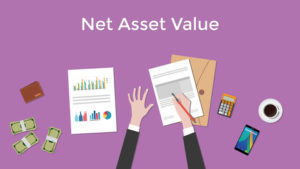
(Illustration by Teguh Jati Prasetyo)
As Miller explains, a company’s shares over the lifetime of a business will necessarily produce a return equal to the returns produced by that business. Any investor can enjoy the returns of a given business as long as they do not pay too high a price for the stock.
Value investors focus on valuing businesses, and they do not worry about unpredictable shorter term stock prices. Buffett again:
We don’t buy and sell stocks based upon what other people think the stock market is going to do (I never have an opinion) but rather upon what we think the company is going to do. The course of the stock market will determine, to a great degree, when we will be right, but the accuracy of our analysis of the company will largely determine whether we will be right. In other words, we tend to concentrate on what should happen, not when it should happen.
Buffett stresses these lessons repeatedly. As Miller writes, stocks are not pieces of paper to trade back and forth. Stocks are claims on a business, and some of those businesses can be valued. We cannot predict when a stock price will approximate intrinsic value, but we know that it will in the long run. The market eventually gets it right. The proper focus for an investor is finding the right businesses at the right prices, without worrying about when an investment will work.
Forecasting
Buffett learned from Graham that macro variables simply cannot be predicted. It’s just too hard to forecast the stock market, interest rates, commodity prices, GDP, etc. Regarding the annual values of macro variables, Buffett was (and still is) extremely consistent in his opinion:
I don’t have the first clue.
All of Buffett’s experience over the past 65+ years has convinced him even more that such variables simply can’t be predicted from year to year with any sort of reliability. As Buffett wrote in 2014:
Anything can happen anytime in markets. And no advisor, economist, or TV commentator—and definitely not Charlie nor I—can tell you when chaos will occur. Market forecasters will fill your ear but will never fill your wallet.
Link: http://berkshirehathaway.com/letters/2014ltr.pdf

(Illustration by Maxim Popov)
Ben Graham:
If I have noticed anything over these sixty years on Wall Street, it is that people do not succeed in forecasting what’s going to happen to the stock market.
Seth Klarman:
In reality, no one knows what the market will do; trying to predict it is a waste of time and investing based upon that prediction is a speculative undertaking.
Finally, Buffett again:
Charlie and I never have an opinion on the market because it wouldn’t be any good and it might interfere with the opinions we have that are good.
The unpredictability of the stock market from year to year (along with other macro variables) is an extremely important lesson for investors. History is full of examples of highly intelligent people making these types of predictions, and being wrong. Miller notes:
Through Buffett’s insights, we learn not to fall victim to the siren songs of these ‘expert’ opinions and churn our portfolios, jumping from guesstimate to guesstimate and allowing what could otherwise be a decent result to be consumed by taxes, commissions, and random chance.
Buffett himself is a good example of how unpredictable the stock market is. For most of the years when Buffett ran BPL—from the mid-1950’s until 1969—he often commented that he thought stocks were overvalued. But as a value investor, Buffett focused nearly all his time on finding individual stocks that were undervalued. He kept writing that the stock market would decline, even though he didn’t know when. It turned out to take almost a decade from Buffett’s initial warning before the stock market actually did decline. Because he stayed focused on individual stocks, his track record was stellar. Had Buffett ever stopped focusing on individual stocks because he was worried about a stock market decline, he would have missed many years of excellent results.
Miller remarks:
A good deal of Buffett’s astonishing success during the Partnership years and beyond has come from never pretending to know things that were either unknowable or unknown.
Miller concludes:
The good news is that the occasional market drop is of little consequence to long-term investors. Preparing yourself to shrug off the next downturn is an important element of the method Buffett lays out. While no one knows what the market is going to do from year to year, odds are we will have at least a few 20-30% drops over the next decade or two. Exactly when these occur is of no great significance. What matters is where you start and where you end up—shuffle around the order of the plus and minus years and you still come to the same ultimate result in the end. Since the general trend is up, as long as a severe 25-40% drop isn’t going to somehow cause you to sell out at the low prices, you’re apt to do pretty well in stocks over the long run. You can allow the market pops and drops to come and go, as they inevitably will.
For the vast majority of investors, it is literally true that they would get the best long-term results if, after buying some decent investments (value investments or index funds), they completely forgot about these holdings. One study by Fidelity showed that the best performing of all their account holders literally forgot they had portfolios at all.
Graham explained this long ago (as quoted by Miller):
The true investor scarcely ever is forced to sell his shares, and at all other times he is free to disregard the current price quotation. He need pay attention to it and act upon it only to the extent that it suits his book, and no more. Thus the investor who permits himself to be stampeded or unduly worried by unjustified market declines in his holdings is perversely transforming his basic advantage into a basic disadvantage. That man would be better off if his stocks had no market quotation at all, for he would then be spared the mental anguish caused him by other persons’ mistakes of judgment.
COMPOUNDING
If Buffett skipped a haircut for $10 in 1956 and invested it instead, that $10 would be worth more than $1 million today ($10 compounded at 22% for 60 years). Being keenly aware of the power of compounding, Buffett has always been exceptionally frugal.

(Photo by Bjørn Hovdal)
Another example of the power of compounding is Ronald Read, a gas station attendant. As Miller observes, Read ended up with $8 million by consistently investing a small portion of his salary into high-quality dividend-paying stocks.
In Buffett’s case, after becoming the world’s richest man during a few different years, he was able to make the largest private charitable donation in history—to the Gates Foundation, run by his friends Bill and Melinda Gates. It’s also noteworthy, says Miller, that Buffett is (and has long been) one of the happiest people on earth because he gets to spend the majority of his time doing things he loves doing.
Stocks versus Bonds Today
Miller writes (in 2016):
Today, with bond yields not too far from zero, a 5-6% per annum result over the next 20 to 30 years seems like a reasonable assumption [for stocks]. If we get those kinds of results, the power of compound interest will be just as important, but it will take longer for the effects to gain momentum.
Small costs add up to a very large difference over time. Probably no one explains this better than Jack Bogle. See: https://boolefund.com/bogle-index-funds/
MEASURING UP
One of Buffett’s “Ground Rules” for BPL was Ground Rule #5:
While I much prefer a five-year test, I feel three years is an absolute minimum for judging performance. It is a certainty that we will have years when the partnership performance is poorer, perhaps substantially so, than the Dow. If any three-year or longer period produces poor results, we should start looking around for other places to have our money. An exception to the latter statement would be three years covering a speculative explosion in a bull market.
Buffett also set very ambitious goals at the outset of BPL, including beating the Dow by an average margin of 10 percentage points per year. Buffett explains how his value investing approach could achieve this target:
I would consider a year in which we declined 15% and the Average 30% to be much superior to a year when both we and the Average advanced 20%. Over a period of time there are going to be good and bad years; there is nothing to be gained by getting enthused or depressed about the sequence in which they occur. The important thing is to be beating par; a four on a par three hole is not as good as a five on a par five hole and it is unrealistic to assume we are not going to have our share of both par three’s and par five’s.
THE PARTNERSHIP: AN ELEGANT STRUCTURE
Incentives drive human conduct. The vast majority of people underestimate just how important incentives are when trying to predict or explain human behavior. As Charlie Munger has said:
I think I’ve been in the top 5% of my age cohort almost my entire adult life in understanding the power of incentives, and yet I’ve always underestimated that power. Never a year passes but I get some surprise that pushes a little further my appreciation of the incentive superpower.

(Image by Ctitze)
Buffett figured that stocks would increase 5-7% per year on average. He designed the fee structure of BPL with this in mind. The chief fee structure was as follows: there would be no flat fee based on assets under management, and there would be no fee on the first 6% increase in any given year. There would be a fee of 25% of profits above the first 6% increase in any given year.
The 6% would compound from year to year. Because Buffett’s explicitly stated goal was to beat the Dow by an average of 10% per year, his fee structure was designed accordingly. Unlike most professional investors, Buffett didn’t charge any flat fee just for having assets under management. Rather, his entire fee essentially came from beating the market—or beating a 6% increase compounded each year. If Buffett did much better than the market, then he would be rewarded accordingly. Yet if Buffett fell behind the market, then it could take some time before he earned any fees, since the 6% level compounded each and every year.
In a nutshell, the incentives were well-designed for Buffett to minimize the downside and maximize the upside. Because Buffett understood Graham’s value investing approach to be set up in just this way—where minimizing the downside was a part of maximizing the upside—Buffett was incentivized to do value investing as well as he possibly could.
Compare Buffett’s fee structure in BPL to the fee structure of many of today’s hedge funds. These days, many hedge funds charge “2 and 20,” or a 2% flat fee for assets under management and 20% of all profits. There are, of course, some hedge funds that have outstanding track records. Yet there are quite a few hedge funds where the performance, net of all fees, is not very different (and frequently worse) than the S&P 500 Index. Whereas Buffett’s entire fee was based upon performance above a 6% compounded annual return, there are many hedge funds bringing in huge fees even though their net results are not much different from 6% per year.
In pursuing his investment goals, Buffett used three categories of investments:
- The Generals
- Workouts
- Controls
Miller discusses each category in turn.
THE GENERALS
Miller begins by highlighting that there are many different approaches to value investing. You can focus on very cheap stocks, regardless of business quality or fundamentals. You can instead look for great, well-protected franchise businesses that can compound value over time. You can focus on tiny, obscure microcap companies that are much too small for most professional investors even to consider. Or you could find value in mid- or large-cap companies. And within these categories, you could take a passive approach—like an index fund or a quantitative fund—or you could adopt an active approach of carefully picking each individual stock.
Miller says Buffett essentially used all of these different approaches at one time or another. Miller:
For Buffett, the Generals were a highly secretive, highly concentrated portfolio of undervalued common stocks that produced the majority of the Partnership’s overall gains.
With one exception, Buffett never revealed the names of the companies in which he was investing. These were trade secrets.
Using the Moody’s Manuals and other primary sources of statistical data, Buffett scoured the field to find stocks trading at rock-bottom valuations. Often these were tiny, obscure, and off-the-radar companies trading below their liquidation value. In the early years especially, the Partnership was small enough to be largely unconstrained, allowing for a go-anywhere, do-anything approach, similar to that of most individual investors today.
Even today, it’s remarkable how many tiny microcap companies are virtually unknown. They’re simply too small for most professional investors even to consider. Quite a few have no analyst coverage.

(Photo by Sean824)
Buffett was never concerned about when specific cheap stocks would finally rise toward their intrinsic values. Buffett:
Sometimes these work out very fast; many times they take years. It is difficult at the time of purchase to know any specific reason why they should appreciate in price. However, because of this lack of glamour or anything pending which might create immediate favorable market action, they are available at very cheap prices. A lot of value can be obtained for the price paid.
Among the Generals, Buffett had two subdivisions, as Miller explains.
“Generals – Private Owner” were undervalued based on what a private owner would pay—which itself is still based on discounted future cash flows or liquidation value. But in some cases, these Generals became controlled investments in BPL, meaning Buffett bought enough stock to be able to influence management.
“Generals – Relatively Undervalued” were undervalued stocks that lacked any prospect for BPL or any other private owner to acquire control. Without the possibility of an activist, these cheap stocks were riskier than “Generals – Private Owner.”
Earlier I mentioned discounted cash flows and liquidation value as two primary ways to value companies. These two valuation methods can also be referred to as earnings power value and net asset value. They are linked in that net asset value for a going concern is based on the earnings power of the assets.
Often, however, net asset value is better approximated by liquidation value rather than earnings power. Buffett referred to these deep value opportunities as cigar butts. Like a soggy cigar butt found on a street corner, a deep value investment would often give “one free puff.” Such a cigar butt is disgusting, but that one puff is “all profit.”
One potential problem with Graham’s cigar-butt approach—buying well below liquidation value—is that if a company continues to lose money, then the liquidation value gradually gets eroded.

(Illustration by Preecha Israphiwat)
In these cases, if possible, Buffett would try to buy enough stock in order to influence management. Thus, a General would become a Control. Buffett also looked for situations where another investor would take control. Buffett called this “coattail riding.”
Buffett wrote that deep value cigar butts were central to the great performance of the Buffett Partnership:
… over the years this has been our best category, measured by average return, and has also maintained by far the best percentage of profitable transactions. This approach was the way I was taught the business, and it formerly accounted for a large proportion of all our investment ideas. Our total individual profits in this category during the twelve-year BPL history are probably fifty times or more our total losses.
Yet over time, Buffett evolved from primarily a deep value, cigar-butt strategy to an approach focused on higher quality businesses. Buffett explained the difference in his 1967 letter to partners:
The evaluation of securities and businesses for investment purposes has always involved a mixture of qualitative and quantitative factors. At the one extreme, the analyst exclusively oriented to qualitative factors would say, ‘Buy the right company (with the right prospects, inherent industry conditions, management, etc.) and the price will take care of itself.’ On the other hand, the quantitative spokesman would say, ‘Buy at the right price and the company (and stock) will take care of itself.’ As is so often the pleasant result in the securities world, money can be made with either approach. And, of course, any analyst combines the two to some extent—his classification in either school would depend on the relative weight he assigns to the various factors and not to his consideration of one group of factors to the exclusion of the other group.
Interestingly enough, although I consider myself to be primarily in the quantitative school… the really sensational ideas I have had over the years have been heavily weighted toward the qualitative side where I have had a ‘high-probability insight.’ This is what causes the cash register to really sing. However, it is an infrequent occurrence, as insights usually are, and, of course, no insight is required on the quantitative side—the figures should hit you over the head with a baseball bat. So the really big money tends to be made by investors who are right on the qualitative decisions, but, at least in my opinion, the more sure money tends to be made on the obvious quantitative decisions.
Much later, in his 2014 Berkshire Hathaway Letter to Shareholders, Buffett would explain his evolution from deep value investing to investing in higher quality companies that could be held for a long time. See page 25: http://berkshirehathaway.com/letters/2014ltr.pdf
My cigar-butt strategy worked very well while I was managing small sums. Indeed, the many dozens of free puffs I obtained in the 1950’s made the decade by far the best of my life for both relative and absolute performance…
But a major weakness in this approach gradually became apparent: Cigar-butt investing was scalable only to a point. With large sums, it would never work well.
In addition, though marginal businesses purchased at cheap prices may be attractive as short-term investments, they are the wrong foundation on which to build a large and enduring enterprise.
Miller quotes Charlie Munger:
… having started out as Grahamites—which, by the way, worked fine—we gradually got what I would call better insights. And we realized that some company that was selling at two or three times book value could still be a hell of a bargain because of the momentum implicit in its position, sometimes combined with an unusual managerial skill plainly present in some individual or other, or some system or other.
And once we’d gotten over the hurdle of recognizing that a thing could be based on quantitative measures that would have horrified Graham, we started thinking about better businesses… Buffett Partnership, for example, owned American Express and Disney when they got pounded down.

(Illustration by Patrick Marcel Pelz)
Buffett actually amended the Ground Rules so that he could put 40% of BPL into American Express, which had gotten cheap after a huge, but solvable problem—exposure to the Salad Oil Scandal. This was the largest position the partnership ever held, both on a percentage and absolute dollar basis. BPL’s $13 million investment into American Express produced $20 million in profits over the course of a few years, thus creating a large portion of the partnership’s performance during this time. (In today’s dollars, BPL’s Amex investment was about $90 million, while the profit was about $140 million.)
A high quality company has a high and sustainable return on invested capital (ROIC). That’s only possible if the business has a sustainable competitive advantage. Buffett:
The key to investing is not assessing how much an industry is going to affect society, or how much it will grow, but rather determining the competitive advantage of any given company and, above all, the durability of that advantage. The products or services that have wide, sustainable moats around them are the ones that deliver rewards to investors.
Any investor who could find a company like See’s Candies—the quintessential high quality business—and buy it at a reasonable price, would do extremely well over time. But it is exceedingly difficult, even for the smartest investors, to find companies like See’s Candies.
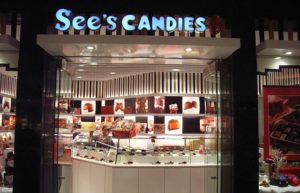
(Photo by Cihcvlss, via Wikimedia Commons)
Buffett and his business partner, Charlie Munger, acquired See’s Candies in 1972. The company has typically experienced a return on invested capital (ROIC) of over 100 percent, which is extraordinary. Buffett and Munger purchased See’s Candies for $25 million. Since then, the business has generated over $2 billion in pre-tax earnings.
Tom Gayner of the Markel Corporation is another investor who has done quite well by buying high quality businesses. Miller notes:
Tom emphasizes that you have to get only a very small number of these right for this type of strategy to really pay off. The companies you get right will harness the power of compounding and grow to dwarf the mistakes. He argues that investors who make twenty or so sound purchases over a lifetime will come to see one or two grow to become a significant percentage of their net worth.
Tom has a great example of this phenomenon that also reminds us not to pigeonhole Ben Graham as purely a deep value investor. Graham paid up for quality when he bought the insurance company GEICO—he ended up making more profits from that single investment than he did from all his other activities combined.
What Should You Do?
Assume that you are an investor operating with modest sums. Is it best to follow the deep value, cigar butt approach, or is it best to look for high-quality companies that can compound business value over time? Miller writes:
One can make a strong case for either method, just as many well-respected investors have done. Both can work, but what’s right for you will depend on the size of funds you are working with, your personality, your own ability to do good valuation work, and your ability to define objectively the outer edges of your own competence.
Tobias Carlisle, with his 2014 book, Deep Value, comes out as a good example of a Graham purist. His research shows that the worse a cheap company’s fundamentals, the better the stock is likely to do. With his deeply quantitative orientation, Tobias has developed something he calls the ‘Acquirer’s Multiple’ to identify and systematically make good investment decisions. He seems to have found something that he understands and that works well for him. Note that he literally shuns quality in his approach to finding value.
… While he’s smart to have found something that works for him, he’s even smarter to avoid what doesn’t. Of course he’d prefer to buy a great business over a poor business if he could be sure that it could maintain its high returns well into the future. However, he hasn’t yet found a way to identify the companies with the factors needed to protect those high returns from competition, at least systematically, so he avoids them.
As Buffett himself has often written, a quantitative, deep value approach is a much surer source of investment profits than an approach based on finding high quality companies. Many investors are better off following a cigar-butt approach. (This is what the Boole Microcap Fund does.)

(Photo by Sensay)
Buffett himself got the highest returns of his career from microcap cigar butts. See: https://boolefund.com/buffetts-best-microcap-cigar-butts/
Concentration
Buffett has often observed that only a small handful of investments have been responsible for the vast majority of wealth he’s created over time. Buffett:
I will only swing at pitches that I really like. If you do it 10 times in your life, you’ll be rich. You should approach investing like you have a punch card with 20 punch-outs, one for each trade in your life.
I think people would be better off if they only had 10 opportunities to buy stocks throughout their lifetime. You know what would happen? They would make sure that each buy was a good one. They would do lots and lots of research before they made the buy. You don’t have to have many 4X growth opportunities to get rich. You don’t need to do too much, but the environment makes you feel like you need to do something all the time.
Whether you use a deep value approach or a strategy based on higher quality, it is possible to concentrate.
That said, if you use a quantitative approach—which works well for deep value—then having at least 15-20 positions generally works better over time. Part of the reason is that, when buying a basket of deep value stocks—stocks which are typically very ugly—it is rarely possible to say which ones will be the best performers. The legendary value investor Joel Greenblatt, who has excelled at both deep value and high-quality value, has readily admitted that the deep value stocks he picks as best often are not the best. Greenblatt also has said:
In our experience, eliminating the stocks you would obviously not want to own eliminates many big winners.
As Tobias Carlisle so clearly illustrates in Deep Value, the ugliest of the ugly often end up being among the best performers. Without a fully quantitative strategy—which forces you to buy the cheapest, ugliest stocks—it is easy to miss many big winners.
Tom Gayner’s strategy is almost the opposite of Tobias Carlisle’s but he understands it and it works for him. Neither one is ‘right’ or ‘wrong’; each has developed a value system that works for him. What’s right in investing is what works for the individual.
WORKOUTS
What Buffett called Workouts is now known as merger arbitrage (or risk arbitrage). When one company announces that it will buy another, the acquisition target stock will move up towards the announced price, but not all the way.
With a sufficient spread and with a high probability of the deal closing, Buffett would take a position in the target company’s stock. Buffett learned the technique from Graham. If one were to combine the record of Graham-Newman, BPL, and Berkshire Hathaway through 1988—a total period of 65 years—Buffett calculated that merger arbitrage produced unlevered returns of about 20% per year. So this was a very profitable category for the Buffett Partnership.
Because Buffett would often use up to 10% margin—and never more than 25%—the actual net returns for BPL were likely higher than 20% per year. Thus, not only could Workouts do just as well as the Generals—because of the modest leverage used in merger arbitrage—but even more importantly, Workouts were largely uncorrelated (and often negatively correlated) with the overall stock market. So even when the overall market was flat or down—which often meant that the Generals were flat or down—Workouts could and sometimes did produce a positive return. As Buffett wrote:
Obviously the workouts (along with controls) saved the day in 1962, and if we had been light in this category that year, our final result would have been much poorer, although still quite respectable considering market conditions during the year. We could just as well have had a much smaller percentage of our portfolio in workouts that year; availability decided it, not any notion on my part as to what the market was going to do. Therefore, it is important to realize that in 1962 we were just plain lucky regarding mix of categories.
In 1963 we had one sensational workout which greatly influenced results, and generals gave a good account of themselves, resulting in a banner year. If workouts had been normal, (say, more like 1962) we would have looked much poorer compared to the Dow….
Buffett goes on to note that in 1964, Workouts were a big drag on performance. So Workouts didn’t work in every year, but they did tend to produce excellent returns over time. And these returns were uncorrelated or negatively correlated with the returns of the Generals. Buffett wrote: “In years of market decline, it piles up a big edge for us; during bull markets, it is a drag on performance.”
Note: Merger arbitrage has gotten much more difficult and competitive these days based on a much larger number of investors and based on huge computing power. Thus, merger arbitrage is best not to do for most investors today. Yet there are other types of investments with low correlation with the overall market that nonetheless can provide good long-term returns. For instance, privately owned businesses might serve in this role. Energy-related stocks—if held for at least 5 years—have low correlation with the overall market and also tend to outperform it. Similarly, many microcap stocks have relatively low correlation with the broad market and outperform it over time.
CONTROLS
Controls are situations when Buffett bought enough stock so as to influence management to unlock value. Miller gives the example of the Sanborn Map Company. Buffett had more than one-third of the Partnership invested in this stock. The company published and constantly revised highly detailed maps of all cities in the United States. Fire insurance companies were the primary users of these maps. Buffett wrote:
In the early 1950’s a competitive method of underwriting known as ‘carding’ made inroads on Sanborn’s business and after-tax profits of the map business fell from an average level of over $500,000 in the late 1930’s to under $100,000 in 1958 and 1959. Considering the upward bias in the economy during this period, this amounted to an almost complete elimination of what had been sizable, stable earning power.
However, during the early 1930’s Sanborn had begun to accumulate an investment portfolio. There were no capital requirements to the business so that any retained earnings could be devoted to this project. Over a period of time, about $2.5 million was invested, roughly half in bonds and half in stocks. Thus, in the last decade particularly, the investment portfolio blossomed while the operating map business wilted.
Let me give you some idea of the extreme divergence of these two factors. In 1938 when the Dow-Jones Industrial Average was in the 100-120 range, Sanborn sold at $110 per share. In 1958 with the Average in the 550 area, Sanborn sold at $45 per share. Yet during that same period the value of the Sanborn investment portfolio increased from about $20 per share to $65 per share. This means, in effect, that the buyer of Sanborn stock in 1938 was placing a positive valuation of $90 per share on the map business ($110 less the $20 value of the investments unrelated to the map business) in a year of depressed business and stock market conditions. In the tremendously more vigorous climate of 1958 the same map business was evaluated at a minus $20 with the buyer of the stock unwilling to pay more than 70 cents on the dollar for the investment portfolio with the map business thrown in for nothing.
Buffett:
… The very fact that the investment portfolio had done so well served to minimize in the eyes of most directors the need for rejuvenation of the map business. Sanborn had a sales volume of about $2 million per year and owned about $7 million worth of marketable securities. The income from the investment portfolio was substantial, the business had no possible financial worries, the insurance companies were satisfied with the price paid for maps, and the stockholders still received dividends. However, these dividends were cut five times in eight years although I could never find any record of suggestions pertaining to cutting salaries or director’s and committee fees.
[Most board members owned virtually no stock…] The officers were capable, aware of the problems of the business, but kept in a subservient role by the Board of Directors. The final member of our cast was a son of a deceased president of Sanborn. The widow owned about 15,000 shares of stock.
In late 1958, the son, unhappy with the trend of the business, demanded the top position in the company, was turned down, and submitted his resignation, which was accepted. Shortly thereafter we made a bid to his mother for her block of stock, which was accepted. At the time there were two other large holdings, one of about 10,000 shares (dispersed among customers of a brokerage firm) and one of about 8,000. These people were quite unhappy with the situation and desired a separation of the investment portfolio from the map business as did we.
Buffett continues:
There was considerable opposition on the Board to change of any type, particularly when initiated by an outsider, although management was in complete accord with our plan… To avoid a proxy fight… and to avoid time delay with a large portion of Sanborn’s money tied up in blue-chip stocks which I didn’t care for at current prices, a plan was evolved taking out all stockholders at fair value who wanted out. The SEC ruled favorably on the fairness of the plan. About 72% of the Sanborn stock, involving 50% of the 1,600 stockholders, was exchanged for portfolio securities at fair value. The map business was left with over $1.25 million in government and municipal bonds as a reserve fund, and a potential corporate capital gains tax of over $1 million was eliminated. The remaining stockholders were left with a slightly improved asset value, substantially higher earnings per share, and an increased dividend rate.
Lessons from Controls
Miller reminds us that investing in a stock is becoming a part owner of the business:
In 1960, one-third of the Partnership was in Sanborn’s stock, meaning one-third of the Partnership was in the business of selling insurance maps and managing a securities portfolio. In his discussion of Controls, Buffett is teaching us to not think about ‘investing in a stock’ but instead to think about ‘being in a business.’
Miller again:
Whether you are running a business or evaluating one, a singular question remains paramount: what is its value, both in terms of the assets involved and the earnings produced, then, how can it be maximized? The skill in answering these questions determines the success of investors and business managers like.
Buffett often quotes Ben Graham on this point:
Investment is most intelligent when it is most businesslike and business is most intelligent when it’s most investment-like.
In some cases, a General would languish in price for years, allowing BPL to continue acquiring the stock at cheap prices. In this way, a General would sometimes become a Control. A General is attractive as a cheap stock. When a General becomes a Control, it becomes more attractive to the extent that BPL can actively work to unlock value.
In the case of Controls, Buffett was willing to work actively to unlock value, but it did often require taking actions that would be criticized, as Miller writes:
… he had to threaten Sanborn Map’s board with a proxy fight (legal battle) to get them to act… At Dempster Mill, we’ll see that he had to fire the CEO and bring in his own man, Harry Bottle. Together they liquidated large parts of the business to restore the economics of the company. Buffett was vilified in the local newspaper for doing so. While he saw himself as saving the business by excising the rotten parts, critics only saw the lost jobs. Early at Berkshire, he had to fire the CEO and hit the brakes on capital expenditures in textiles before redirecting the company’s focus to insurance and banking. It was never easy and often stressful, but when action was needed, action was taken. As he said, ‘Everything else being equal, I would much rather let others do the work. However, when an active role is necessary to optimize the employment of capital, you can be sure we will not be standing in the wings.’
The ability to actively unlock value led Buffett naturally to concentrate heavily. A situation like Sanborn had high upside and a tiny risk of loss, so it made sense to bet big.
With Dempster Mill, Berkshire, and Diversified Retailing Company (DRC), the values had to be estimated by Buffett and confirmed by auditors. In the case of Dempster and Berkshire, BPL owned so much stock that trying to trade it could dramatically impact the market price. That is why the year-end values had to be estimated, which Buffett did conservatively based on current value rather than future value. DRC also had to be valued this way because it was a privately owned business that never had a publicly traded stock.
Correctly valuing the Controls was important. Not only would it impact the year-end overall performance of BPL—too high of an estimate would inflate the performance, while too low of an estimate would depress the performance. But also, correctly valuing Controls would impact limited partners who were entering or leaving the Partnership. Exiting limited partners would benefit at the expense of remaining limited partners if the estimated value of the Controls was too high. Conversely, new limited partners would benefit at the expense of existing limited partners if the estimated value of the Controls was too low. Buffett was very careful, and his estimates were audited by the firm that would later become KPMG.
Buffett’s November 1966 letter to partners gives some detail on the appraisal process:
The dominant factors affecting control valuations are earnings power (past and prospective) and asset values. The nature of our controlled businesses, the quality of the assets involved, and the fact that the Federal Income Tax basis applicable to the net assets substantially exceeds our valuations, cause us to place considerably more weight on the asset factor than is typical in most business valuations…. The Partnership Agreement charges me with the responsibility for establishing fair value for controlling interests, and this means fair to both adding and withdrawing partners at a specific point in time. Wide changes in the market valuations accorded stocks at some point obviously find reflection in the valuation of businesses, although this factor is of much less importance when asset factors (particularly when current assets are significant) overshadow earnings power considerations in the valuation process…
It’s worth noting that Sanborn, Dempster, and Berkshire were all cigar butts where net asset value was much higher than the current market price. They were very cheap businesses, but they were not good businesses, which is part of why valuing them was mostly based on asset value rather than earnings power.
Because Ben Graham relied mostly on the cigar-butt approach, basing his investments on discounts to liquidation value, Buffett had already learned how to value companies based on their assets. Miller quotes Chapter 43 of Graham and Dodd’s Security Analysis:
The rule in calculating liquidating value is that the liabilities are real but the value of the assets must be questioned. This means that all true liabilities shown on the books must be deducted at their face amount. The value to be ascribed to the assets, however, will vary according to their character.
Graham advised the following rule of thumb for liquidation analysis: 100 cents on the dollar for cash, 80 cents on the dollar for receivables, 67 cents on the dollar for inventory (with a wide range depending on the business), and 15 cents on the dollar for fixed assets.
In the case of Sanborn, the company had a hidden asset in the form of a large investment portfolio that was not reflected on its balance sheet. Dempster Mill’s net assets were much higher on the balance sheet than was indicated by the market price. Buffett had to determine what the assets were really worth. With Berkshire, part of the value would be determined by redeploying capital into higher return opportunities. (Buffett’s successful redeployment of Berkshire’s cash formed the foundation for Berkshire Hathaway, now one of the largest and most successful U.S. companies.)
Circle of Competence
A central concept for Buffett and Munger is circle of competence. For any given company, are you capable of reasonably estimating what the assets are worth? If not, you can either spend the time required to understand the company and the industry, or you can put it into the TOO HARD pile.
Buffett and Munger have three piles: IN, OUT, and TOO HARD. A great many public companies simply go into the TOO HARD pile. This limitation—sticking with companies you can understand well—has been a key to the excellent long-term performance of Buffett and Munger.
For a value investor managing a smaller sum, who can focus on tiny, obscure microcap companies, there are thousands and thousands of businesses. When there are so many that you probably can understand well, it makes no sense to spend long periods of time on businesses that are decidedly difficult to understand.
For example, you could spend months gaining an understanding of General Electric, or you could spend that same amount of time gaining a complete understanding of at least a dozen tiny microcap companies. Many microcap businesses are quite simple.
Here’s the thing: As Buffett has pointed out, frequently you don’t get paid for degree of difficulty in investing. If you’re willing to turn over enough rocks, eventually you can find a microcap business that you can easily understand and that is extraordinarily cheap. You’ll almost certainly do far better with that type of investment than with a mid-cap or large-cap company that’s much harder to understand and probably not nearly as cheap.
DEMPSTER DIVING: THE ASSET CONVERSION PLAY
Dempster was a tiny micro cap, a family-owned company in Beatrice, Nebraska, that manufactured windmills and farm equipment.

(Photo by Digikhmer)
Miller:
Much of the fun in investing comes from the hunting process itself… Picture the pulse-quickening moment in 1956 when Buffett, thumbing through the Moody’s Manual, came across a tiny, obscure manufacturing company whose stock had fallen 75% in the previous year. Realizing that it was now available for a fraction of its net working capital and an even smaller fraction of its book value, he started buying the stock as low as $17 a share. He got out at $80.
Miller writes that Dempster can serve as a template for valuing businesses using the net asset value approach. Dempster’s profits were very low, but the stock traded far below its asset value.
Buffett joined the board of directors soon after his first purchase. He kept buying the stock for the next five years. A large block of stock from the Dempster family became available for sale in 1961. By August of that year, BPL owned 70% of Dempster and a few “associates” owned another 10%. BPL’s average price was $1.2 million ($28/share), roughly a 50% discount to working capital and 66% discount to book value. Dempster accounted for roughly 20% of BPL’s total assets by year-end.
The situation was challenging at first because the inventories were high and rising. Buffett tried to work with existing management, but had to throw them out because inventories kept rising. The company’s bank was threatening to seize the collateral backing the loan. With 20% of BPL in Dempster, if the company went under it would have a large negative impact on the Partnership. At Munger’s recommendation, Buffett met and hired an “operating man” name Harry Bottle.
Bottle was a turnaround specialist. Buffett was so happy with Bottle’s work that in the next year’s letter, Buffett named him “man of the year.” He cut inventories from $4 million to $1 million, quickly repaid the bank loan, cut administrative and selling expenses in half, and closed five unprofitable branches. With help from Buffett and Munger, Bottle also raised prices up to 500% on their used equipment. There was little impact on sales volume. All of these steps worked together to put Dempster on a healthy economic footing.
Buffett then took an unusual step. Whereas most managers feel automatically that they must reinvest profits into the business, even if the business is creating low returns, Buffett was more rational. Miller explains:
With Dempster he wasn’t at all bogged down with all the emotional baggage of being a veteran of the windmill business. He was in it to produce the highest rate of return on the capital he had tied up in the assets of the business. This absolute scale allowed him to see that the fix for Dempster would come by not reinvesting back in windmills. He immediately stopped the company from putting more capital in and started taking the capital out.
Instead, Buffett invested the capital into the cheapest stocks he could find, those offering the highest potential returns. In effect, he was converting capital from a low-return business to a high-return business—buying cheap stocks until they rose towards intrinsic value. Over time, Dempster looked less like a manufacturing company and more like the investment partnership. Miller observes:
The willingness and ability to see investment capital as completely fungible, whether it is capital tied up in the assets of a business or capital that’s invested in securities, is an exceedingly rare trait.
Dempster initially was worth $35/share in 1961. By year-end 1962, Dempster was worth $51/share, with market securities worth $35/share and the manufacturing operations worth $16/share.
Buffett also learned from this experience the importance of a high-quality and trustworthy CEO. Buffett heaped praise on Harry Bottle. Miller points out that Buffett developed a style like that of Dale Carnegie: Praise by name, criticize by category.
It should also be noted that Dempster’s market value in 1961 was $1.6 million, a tiny microcap company. This kind of opportunity—including being able to buy control—is open to those investing relatively small sums. Very often the cheapest stocks can be found among microcap companies. This high degree of inefficiency results from the fact that most professionals investors never look at micro caps.
Miller sums it up:
Buffett teaches investors to think of stocks as a conduit through which they can own their share of the assets that make up a business. The value of that business will be determined by one of two methods: (1) what the assets are worth if sold, or (2) the level of profits in relation to the value of assets required in producing them. This is true for each and every business and they are interrelated. Buffett commented, ‘Harry has continued this year to turn under-utilized assets into cash, but in addition, he has made the remaining needed assets productive.’
Operationally, a business can be improved in only three ways: (1) increase the level of sales; (2) reduce costs as a percent of sales; (3) reduce assets as a percentage of sales. The other factors, (4) increase leverage or (5) lower the tax rate, are the financial drivers of business value. These are the only ways a business can make itself more valuable.
Buffett ‘pulled all the levers’ at Dempster. Raising prices on replacement parts and reducing operating costs pulled levers #1 and #2. Lever #3 was pulled as inventories (assets) were reduced. Lever #4 was pulled when Buffett borrowed money to buy more stocks. Lever #5 was pulled when he avoided a big tax bill by selling all the operating assets of the company.
When profitability goes up and the capital required to produce it goes down, the returns and the value of the business go straight up. Buffett understood this intrinsically and Dempster is now a powerful example for today’s investors who obsess over (1) and (2) at the expense of (3). Pulling underutilized assets out of a company not only produces cash to be used elsewhere, it makes the business better and more valuable. It is a wonderful reminder to individual and professional investors alike to focus their attention first on the balance sheet (there is a reason it comes first in the set of financial statements). Never lose sight of the fact that without tangible assets, there would be no earnings in the first place.
CONSERVATIVE VERSUS CONVENTIONAL
Although following the crowd made sense in our evolutionary history, and still makes sense in many circumstances, following the crowd kills your ability to outperform the stock market. Miller explains:
Successful investing requires you to do your own thinking and train yourself to be comfortable going against the crowd. You could say that good results come primarily from a properly calibrated balance of hubris and humility—hubris enough to think you can have insights that are superior to the collective wisdom of the market, humility enough to know the limits of your abilities and to be willing to change course when errors are recognized.
You’ll have to evaluate facts and circumstances, apply logic and reason to form a hypothesis, and then act when the facts line up, irrespective of whether the crowd agrees or disagrees with your conclusions. Investing well goes against the grain of social proof; it goes against the instincts that have been genetically programmed into our human nature. That’s part of what makes it so hard.
Howard Marks, a Buffett contemporary who also has a literary bent, challenges his readers to “dare to be great” in order to dare to be better investors. As he tells his readers, “the real question is whether you dare to do the things that are necessary in order to be great. Are you willing to be different, and are you willing to be wrong? In order to have a chance at great results, you have to be open to being both.”
There are two key ideas in Buffett’s highly independent approach:
- The best purchases are made when your thinking puts you in opposition to conventional wisdom or popular trends.
- A concentrated portfolio can actually be more conservative than a diversified one when the right conditions are met.
Conventional, academic thinking equates the riskiness of a stock with its beta, which is a measure of its volatility. Buffett, later in his career, gave the following example to illustrate the silliness of beta:
The Washington Post Company in 1973 was selling for $80 million in the market. At the time, that day, you could have sold the assets to any one of ten buyers for not less than $400 million, probably appreciably more…
Now, if the stock had declined even further to a price that made the valuation $40 million instead of $80 million, it’s beta would have been greater. And to people who think beta [or, more importantly, downside volatility] measures risk, the cheaper price would have made it look riskier. This is truly Alice in Wonderland. I have never been able to figure out why it’s riskier to buy $400 million worth of properties for $40 million than $80 million….
In the 1970’s, the Washington Post Company was an outstanding, high-return business and remained so for decades. Of course, like most businesses, its high profitability did not last, in this case because of the internet.
But the point is that if you, as a value investor, buy something at 20% of probable intrinsic value, and the stock then drops 50% and you buy a bunch more, your investment now has 10x upside instead of 5x, and simultaneously, your investment is now probably safer.
Having the expected return from your investment double, while at the same time having the downside risk get cut in half, is completely contrary to what is taught in modern finance theory. Finance theory says that a higher potential return always requires higher risk. Yet the experience of many value investors is that quite often an increase in potential return also means a decrease in risk. Thus, a value investor cheers (and backs up the truck) when his or her best idea keeps going down in price, and this happens routinely.
Thinking for Yourself
The best time to buy is when the crowd is most fearful. But this requires thinking for yourself. A good example is when Buffett put 40% of BPL into American Express after the Salad Oil Scandal. Miller:
The Partnership lessons teach investors that there is only one set of circumstances where you or anyone else should make an investment—when the important facts in a situation are fully understood and when the course of action is as plain as day. Otherwise, pass. For instance, in Sanborn, when Buffett realized he was virtually assured to make money in the stock given he was buying the securities portfolio at 70 cents on the dollar with the map company coming for free, he invested heavily. When he saw Dempster was selling below the value of its excess inventory alone, he loaded up.
Miller quotes Buffett:
When we really sit back with a smile on our face is when we run into a situation we can understand, where the facts are ascertainable and clear, and the course of action is obvious. In that case—whether conventional or unconventional—whether others agree or disagree—we feel—we are progressing in a conservative manner.
Ben Graham:
You’re neither right nor wrong because the crowd disagrees with you. You’re right because your data and reasoning are right.
Buffett again:
You will not be right simply because a large number of people momentarily agree with you. You will not be right simply because important people agree with you… You will be right, over the course of many transactions, if your hypotheses are correct, your facts are correct, and your reasoning is correct.
Buffett, once more:
A public opinion poll is no substitute for thought.
Loading Up
Buffett thought it was conservative and rational to put 40% of the Partnership assets into American Express. Buffett had amended the Ground Rules of the Partnership to include a provision that allowed up to 40% of BPL’s assets to be in a single security under conditions “coupling an extremely high probability that our facts and reasoning are correct with a very low probability that anything could drastically change the underlying value of the investment.”
Miller notes that Buffett gave the following advice to a group of students in the late 1990s:
If you can identify six wonderful businesses, that is all the diversification you need. And you will make a lot of money. And I can guarantee that going into a seventh one instead of putting more money into your first one is going to be a terrible mistake. Very few people have gotten rich on their seventh best idea. But a lot of people have gotten rich with their best idea. So I would say for anyone working with normal capital who really knows the businesses they have gone into, six is plenty, and I [would] probably have half of [it in] what I like best.
Your Best Ideas Define Your Next Choice
If you’re using concentrated value investing, then the simple test for whether to add a new idea to your portfolio is to compare any new idea to your best current ideas.
Successful concentrated value investing requires a great deal of passion, curiosity, patience, and prior experience (i.e., lots of mistakes). It also often requires a focus on tiny, obscure micro caps, since this is the most inefficient part of the market and it contains many simple businesses.
Buffett explains:
Simply stated, this means I am willing to concentrate quite heavily in what I believe to be the best investment opportunities recognizing very well that this may cause an occasional very sour year—one somewhat more sour, probably, than if I had diversified more. While this means our results will bounce around more, I think it also means that our long-term margin of superiority should be greater.
Buffett in the January 25, 1967, BPL Letter:
Our relative performance in this category [Generals–Relatively Undervalued] was the best we have ever had—due to one holding which was our largest investment at yearend 1965 and also yearend 1966. This investment has substantially outperformed the general market for us during each year (1964, 1965, 1966) that we have held it. While any single year’s performance can be quite erratic, we think the probabilities are highly favorable for superior future performance over a three or four year period. The attractiveness and relative certainty of this particular security are what caused me to introduce Ground Rule 7 in November, 1965 to allow individual holdings of up to 40% of our net assets. We spend considerable effort continuously evaluating every facet of the company and constantly testing our hypothesis that this security is superior to alternative investment choices. Such constant evaluation and comparison at shifting prices is absolutely essential to our investment operation.
It would be much more pleasant (and indicate a more favorable future) to report that our results in the Generals—Relatively Undervalued category represented fifteen securities in ten industries, practically all of which outperformed the market. We simply don’t have that many good ideas…
SIZE VERSUS PERFORMANCE
Miller comments that Buffett, if he were managing a relatively small amount of money, probably would have stayed fully invested even during the speculative peak of the late 1990’s. This is largely because there are almost always cheap microcap companies that are too small and obscure to be noticed by most investors. As Buffett said during the late 1990’s:
If I was running $1 million, or $10 million for that matter, I’d be fully invested.
There were times when he was managing BPL when Buffett recognized that more assets under management would increase the Partnership’s ability to do Control investments. But according to Buffett, it was also sometimes true that less assets under management made it easier to invest in tiny, cheap microcap companies. So Buffett wrote:
What is more important—the decreasing prospects of profitability in passive investments or the increasing prospects in control investments? I can’t give a definite answer to this since to a great extent it depends on the type of market in which we are operating. My present opinion is that there is no reason to think these should not be offsetting factors; if my opinion should change, you will be told. I can say, most assuredly, that our results in 1960 and 1961 would not have been better if we had been operating with the much smaller sums of 1956 and 1957.
By 1966, however, when assets under management reached $43 million, Buffett changed his mind. He wrote his partners:
As circumstances presently appear, I feel substantially greater size is more likely to harm future results than to help them. This might not be true for my own personal results, but it is likely to be true for your results.
Buffett saw a drag on performance that would probably develop as a result of two factors: larger assets under management, and a stock market that was high overall, with far fewer opportunities. It’s important to note again that Buffett did not think a high market would be a factor if he were managing smaller sums. As Buffett said in 2005, when asked if he could still make 50% per year with smaller sums:
Yes, I would still say the same thing today. In fact, we are still earning those types of returns on some of our smaller investments. The best decade was the 1950s; I was earning 50% plus returns with small amounts of capital. I could do the same thing today with smaller amounts. It would perhaps even be easier to make that much money in today’s environment because information is easier to access. You have to turn over a lot of rocks to find those little anomalies. You have to find the companies that are off the map—way off the map. You may find local companies that have nothing wrong with them at all. A company that I found, Western Insurance Securities, was trading for $3/share when it was earning $20/share!! I tried to buy up as much of it as possible. No one will tell you about these businesses. You have to find them.
Ideas versus Capital
The bottom line is simple: If you have more capital than ideas, then assets are too large and will be a drag on performance. If you have more ideas than capital, then assets are not a drag and may even be too small.
GO-GO OR NO-GO
In 1956, Buffett had told his partners that he thought the stock market was high relative to intrinsic value. Since he never tried to predict the market, he remained focused on finding tiny microcap companies that were cheap. Staying focused on finding what was cheapest was central to the 29.8% per year the BPL achieved over the ensuing decade. Had Buffett ever invested less because he was worried about a stock market decline, his record would have been nowhere near as good.
An expensive stock market says nothing about when a correction will happen. And an expensive stock market rarely means that there are no obscure, cheap microcap companies.
By 1966, however, because BPL had more assets under management and because Buffett thought the stock market was even more overvalued, Buffett finally decided not to accept any new capital.
Somewhat ironically, BPL had its best year ever in 1968, with a return of 58.8%. But this also led Buffett to consider closing the Partnership altogether. Buffett had simply run out of ideas, due to the combination of his assets under management and a stock market that was quite overvalued in his view.
In May 1969, Buffett announced his decision to liquidate the Partnership. Performance in 1969 was mediocre, and Buffett wrote:
… I would continue to operate the Partnership in 1970, or even 1971, if I had some really first class ideas. Not because I want to, but simply because I would so much rather end with a good year than a poor one. However, I just don’t see anything available that gives any reasonable hope of delivering such a good year and I have no desire to grope around, hoping to ‘get lucky’ with other people’s money. I am not attuned to this market environment and I don’t want to spoil a decent result by trying to play a game I don’t understand just so I can go out a hero.
Go-Go Years – Jerry Tsai
The big bull market run of the 1960s became known as the Go-Go years. Jerry Tsai’s highly speculative investment style, which produced high returns for some time, was representative of the Go-Go years. In 1968, Tsai shrewdly sold his Manhattan Fund, which had $500 million under management. The fund went on to lose 90% of its value over the next several years.
TOWARD A HIGHER FORM
Buffett constantly evolved as an investor. As Miller writes:
A good deal of this evolution occurred throughout the Partnership years, where we have seen a willingness to concentrate his investments to greater and greater degrees, a steady migration toward quality compounders from statistically cheap cigar butts, and the forging of his highly unique ability to break down the distinction between assets and capital in a way that allows for their fungibility in the pursuit of higher returns.
BOOLE MICROCAP FUND
An equal weighted group of micro caps generally far outperforms an equal weighted (or cap-weighted) group of larger stocks over time. See the historical chart here: https://boolefund.com/best-performers-microcap-stocks/
This outperformance increases significantly by focusing on cheap micro caps. Performance can be further boosted by isolating cheap microcap companies that show improving fundamentals. We rank microcap stocks based on these and similar criteria.
There are roughly 10-20 positions in the portfolio. The size of each position is determined by its rank. Typically the largest position is 15-20% (at cost), while the average position is 8-10% (at cost). Positions are held for 3 to 5 years unless a stock approaches intrinsic value sooner or an error has been discovered.
The mission of the Boole Fund is to outperform the S&P 500 Index by at least 5% per year (net of fees) over 5-year periods. We also aim to outpace the Russell Microcap Index by at least 2% per year (net). The Boole Fund has low fees.
If you are interested in finding out more, please e-mail me or leave a comment.
My e-mail: jb@boolefund.com
Disclosures: Past performance is not a guarantee or a reliable indicator of future results. All investments contain risk and may lose value. This material is distributed for informational purposes only. Forecasts, estimates, and certain information contained herein should not be considered as investment advice or a recommendation of any particular security, strategy or investment product. Information contained herein has been obtained from sources believed to be reliable, but not guaranteed. No part of this article may be reproduced in any form, or referred to in any other publication, without express written permission of Boole Capital, LLC.


